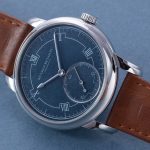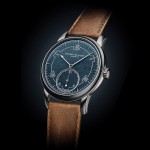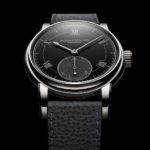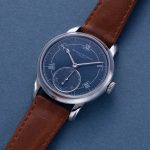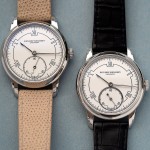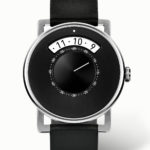Up Close: Akrivia Rexhep Rexhepi Chronomètre Contemporain II “Only Watch”
Still great.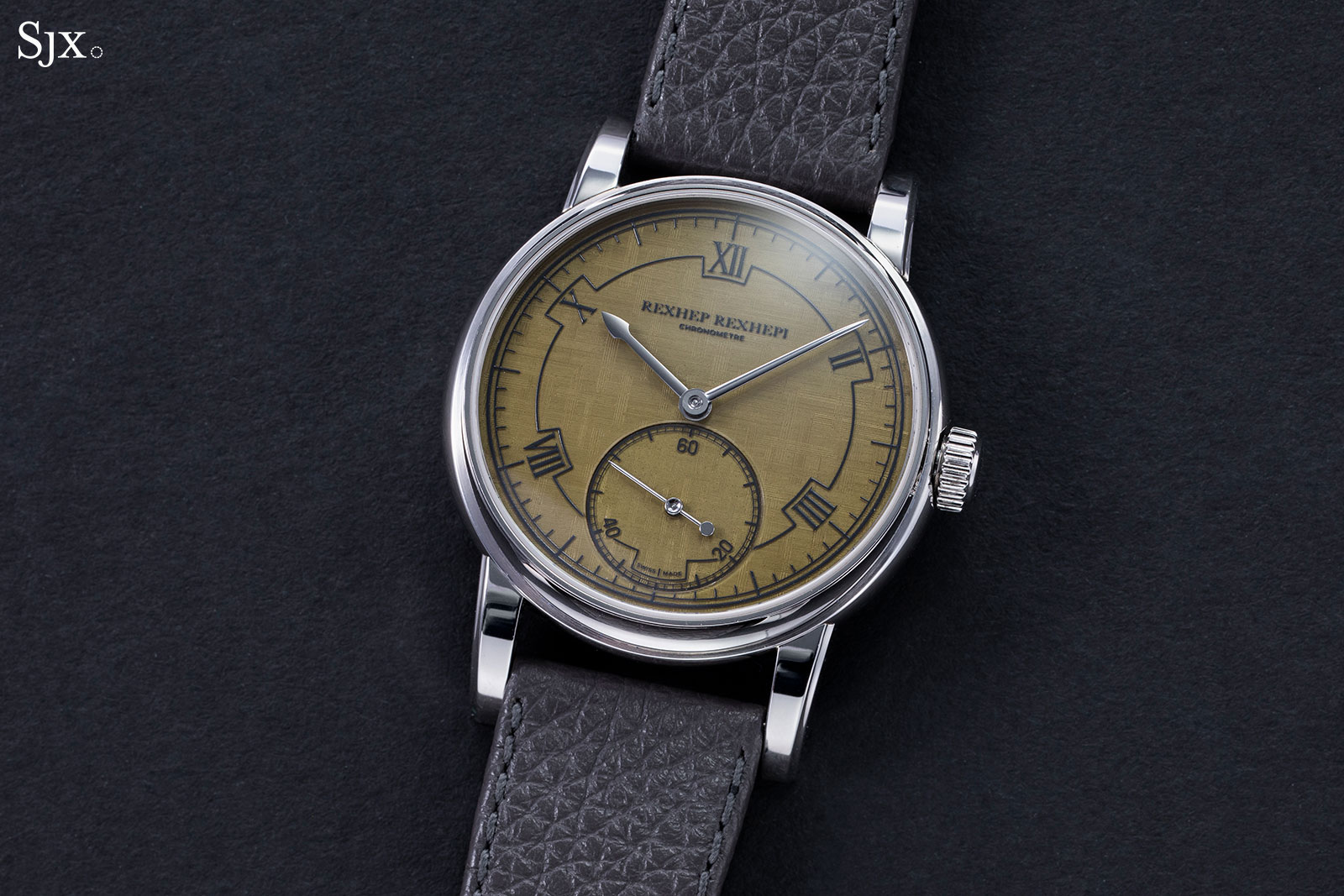
The first Chronomètre Contemporain was the watch that vaulted Rexhep Rexhepi into the top league of independent watchmaking. Now the young watchmaker has debuted the followup, first as a unique example for Only Watch 2021.
The Rexhep Rexhepi Chronomètre Contemporain II (RRCC II) resembles its predecessor inside and out, yet is entirely different in every aspect, from movement construction to the geometry of the lugs. But what it does share with the RRCC I is a gorgeously finished movement and thoughtful design.
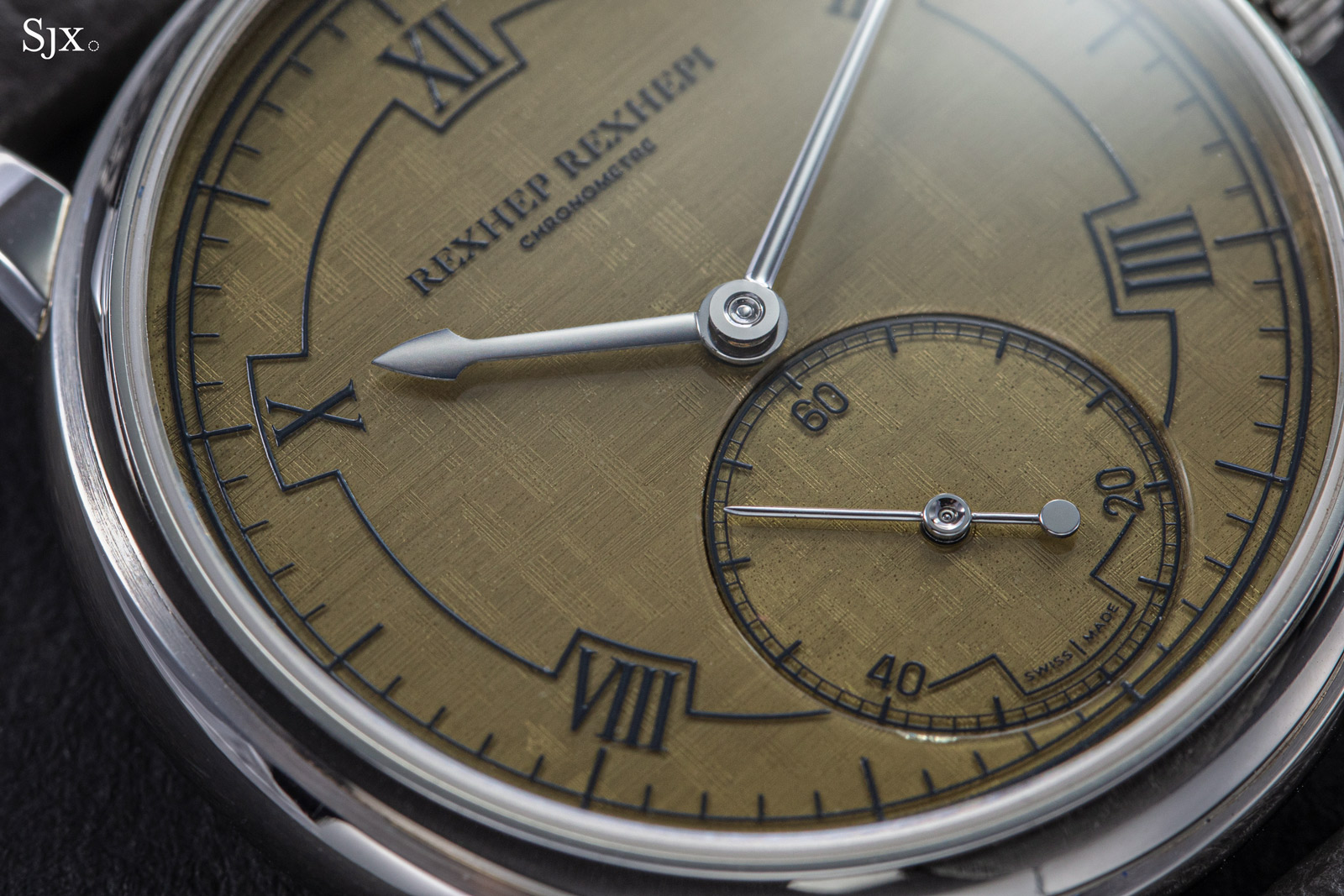
Initial thoughts
On the face of it, the RRCC II for Only Watch looks like the original Chronometre Contemporain dressed in another dial. But it is entirely new in practically every aspect, right down to the geometry of the case. The RRCC II is akin to a generation of the Porsche 911 – the styling seems unchanged but it is actually a brand new car.
The most obvious point of difference is the seconds hand – the RRCC II is a deadbeat seconds. That in itself is novel, because the jumping seconds complication is almost always implemented with a centre seconds. In fact, I can’t think of another watch with a deadbeat subsidiary seconds that isn’t part of another complication. In F.P. Journe’s tourbillon for instance, the deadbeat seconds is part of the constant force mechanism.
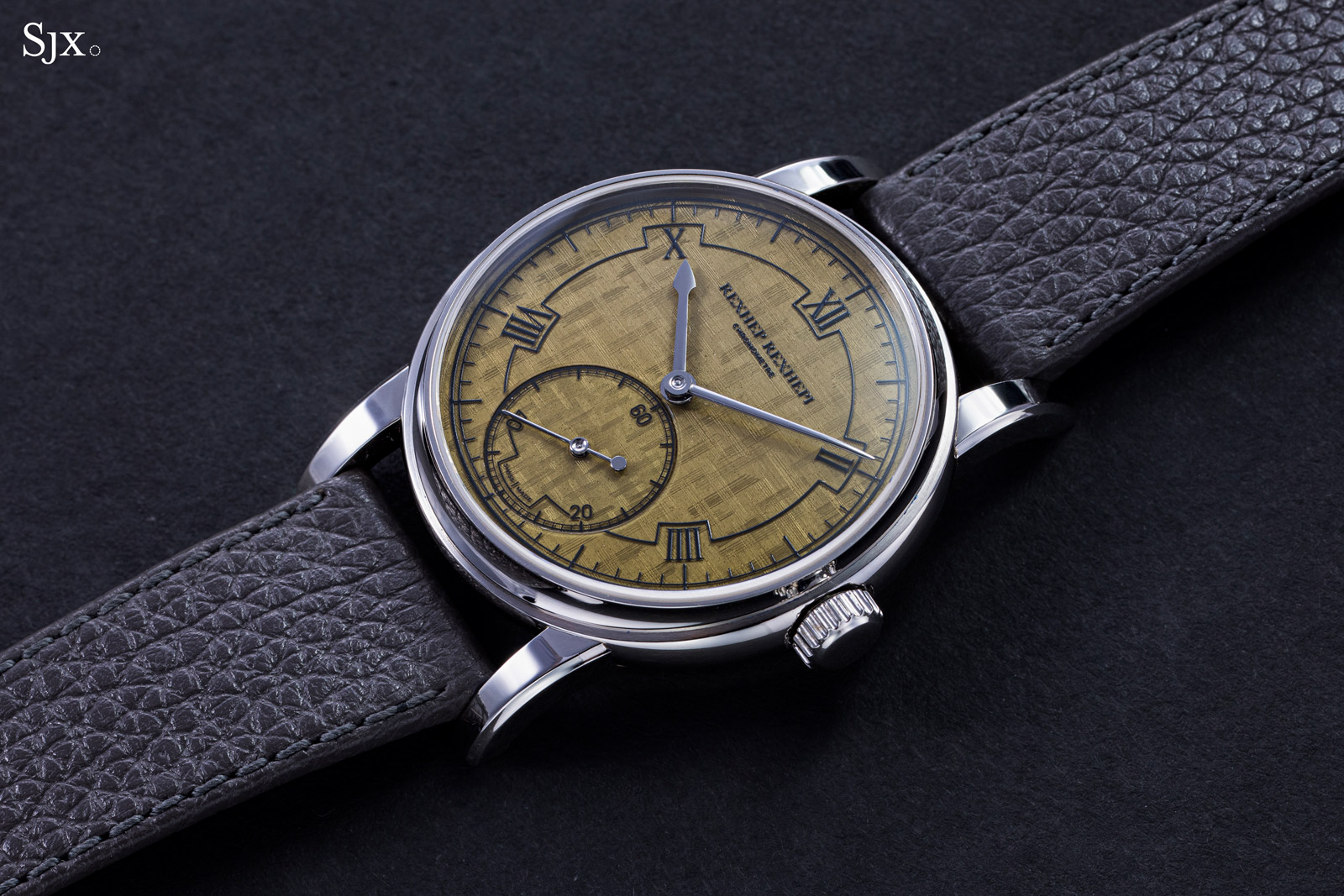
Even the movement appears superficially similar, though it is quickly evident that it’s a new calibre solely from the two large jewels for the barrel pivots. This has twin barrels, instead of the single barrel of the RRCC I.
And up close the differences become more apparent. The finishing, for instance, has been made more pronounced. The anglage on the bridges is now fuller, both wider and rounder.
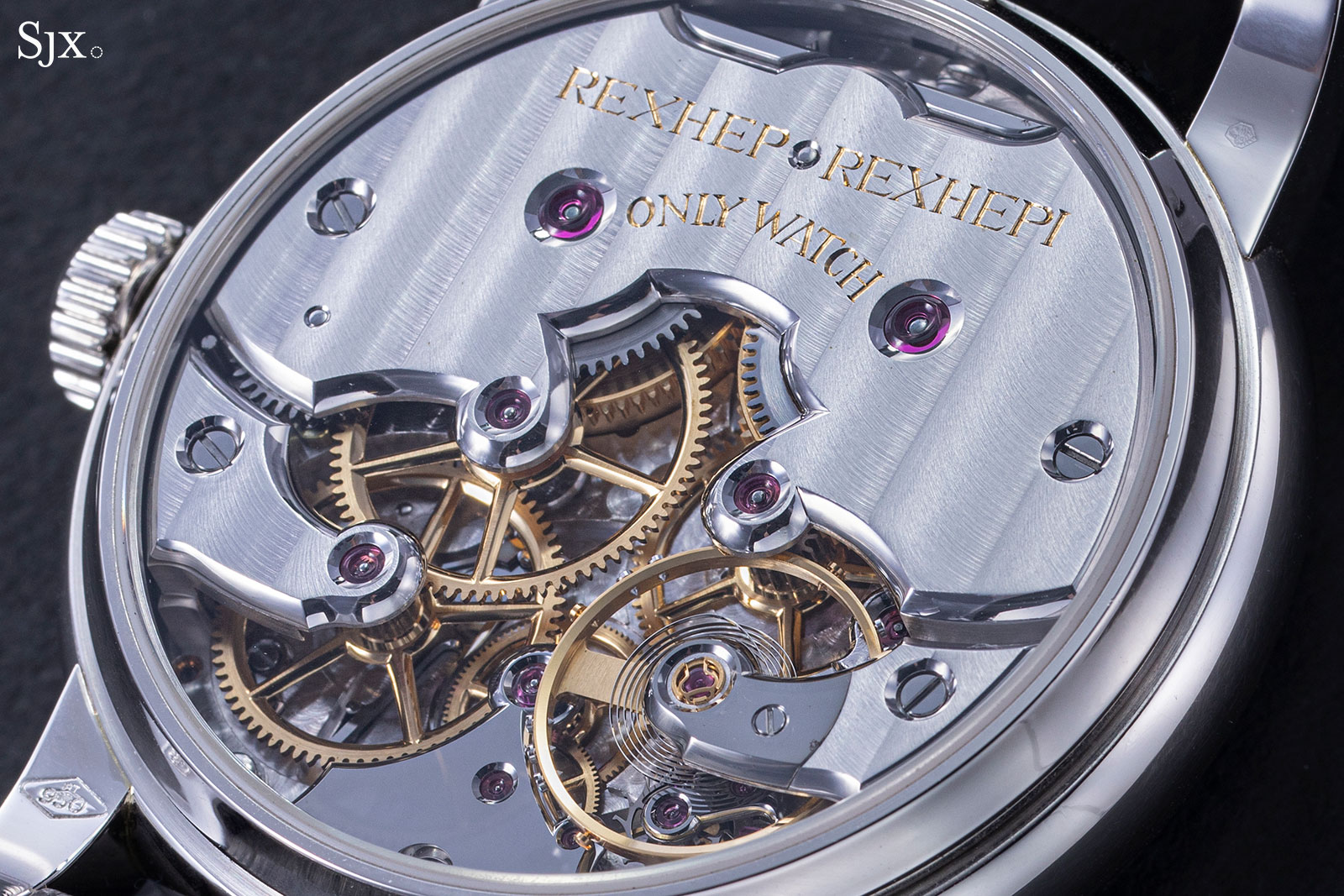
And the refinements continue on the case, albeit in a far more discreet manner. The lugs are now longer and thinner, giving the watch a more graceful profile that is difficult to observe unless compared against the first generation model.
Even the dial design has been refined, although it retains the same overall look as its predecessor. That said, the refinements to the dial are not apparent on the Only Watch example (more on this below), which is a prototype.
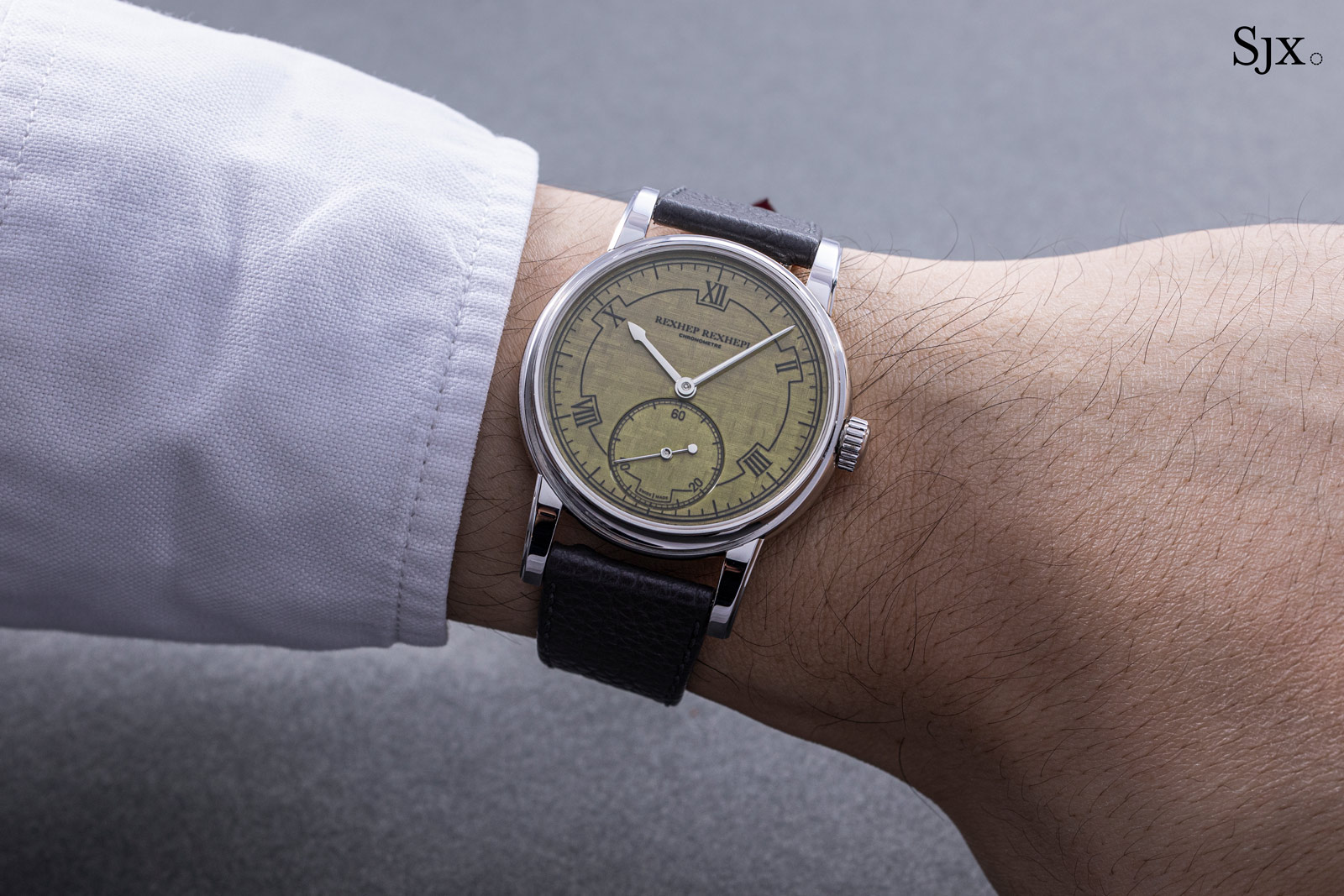
The Only Watch version is unique, but the RRCC II will be later be produced as a limited edition in two guises. It will be a tangible illustration of the brand’s progress.
The RRCC II is a better watch than its predecessor. It is more complicated, better finished, and more refined in terms of design.
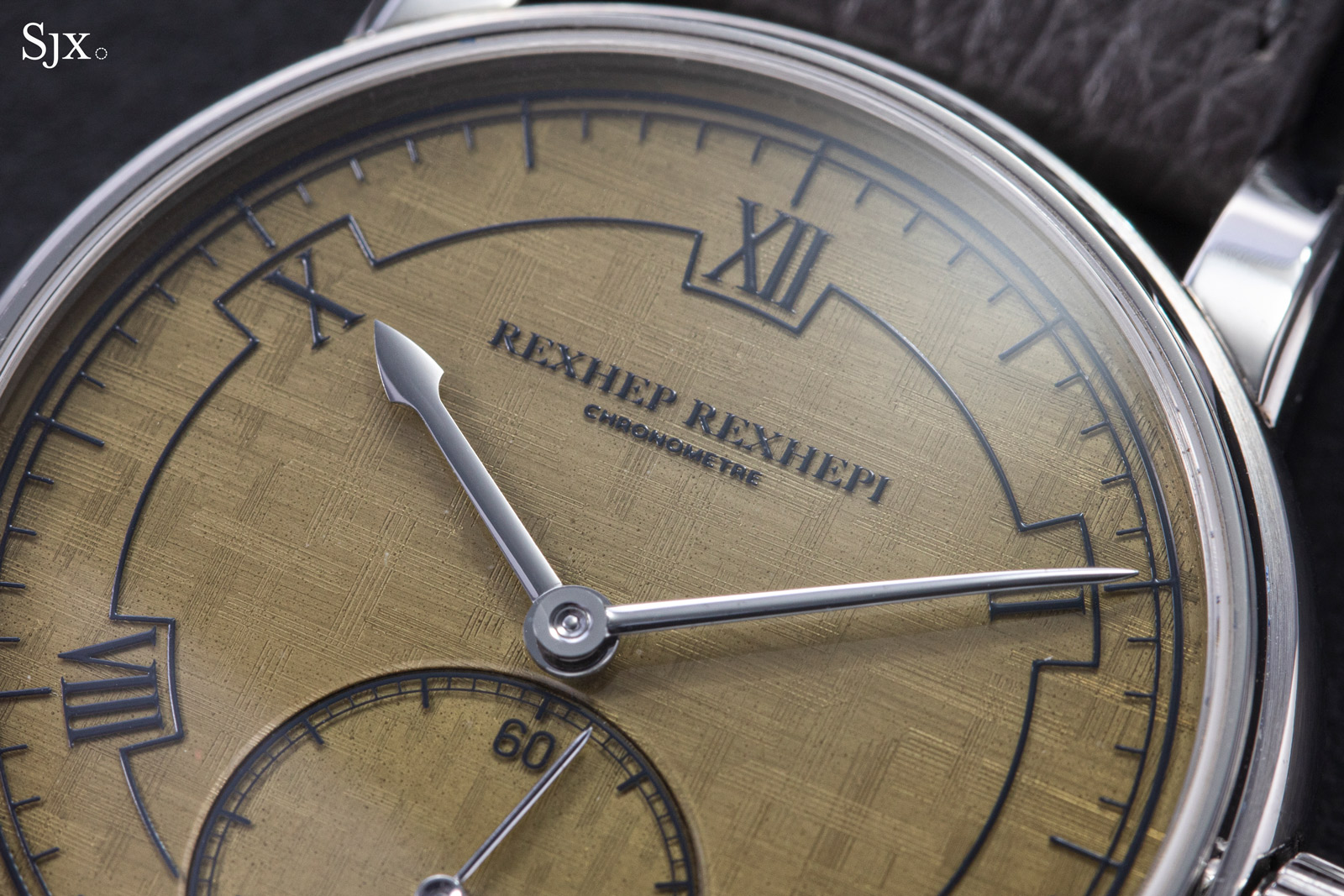
And on the topic of the Only Watch version, there’s the dial colour. It’s a dark gold with a hint of green – not exactly the translucent champagne Mr Rexhepi had in mind.
There wasn’t enough time to remake the dial as the watch had to go on tour around the world, but Mr Rexhepi indicated to me that the buyer of the RRCC II Only Watch has the option of a new dial in a pale champagne enamel, though the replacement will take a while to complete.
The RRCC II “Only Watch” is the first lot in Only Watch, which means the auction will start with a big number. Though is has an estimate of CHF70,000-100,000, I expect it’ll finish well past the half-million mark, and perhaps substantially more than that.
Gently refined
As with the rest of the watch, the dial of the RRCC II was designed to preserve the signature look, but with discreet refinements to the details. Amongst the tweaks are lighter typography and markings, along with doing away with the gold ring circling the seconds on its predecessor.
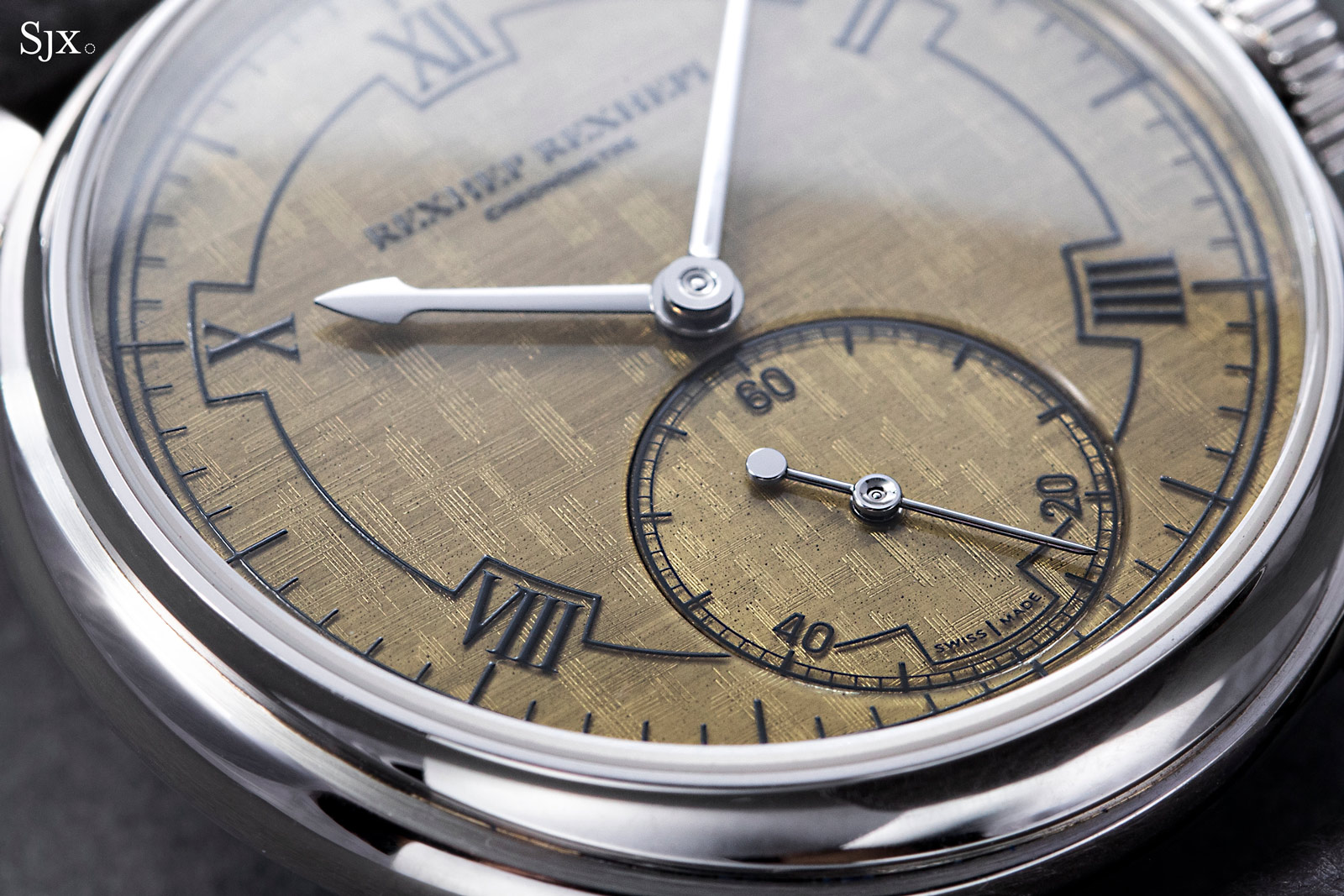

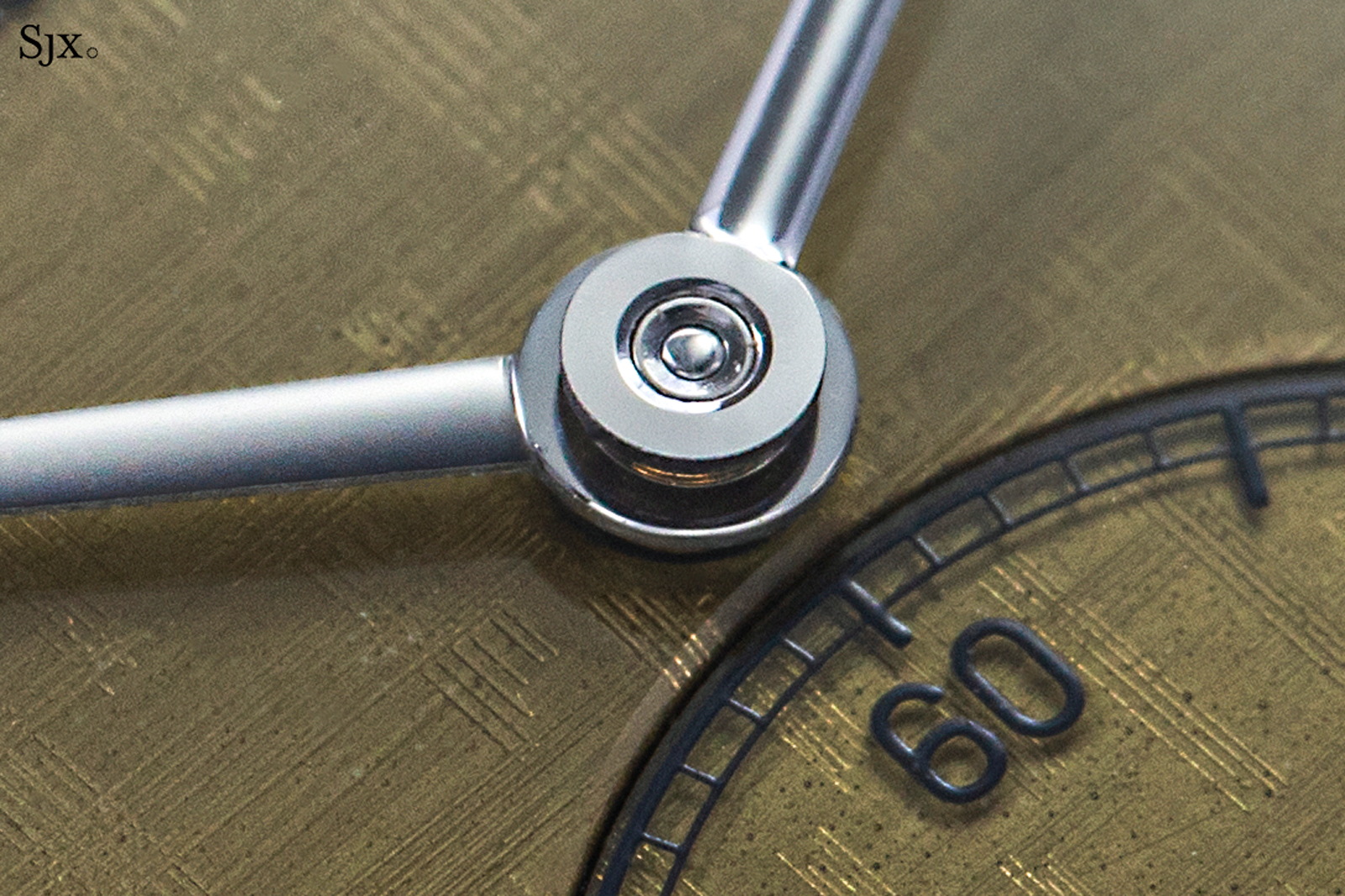
That said, some of the refinements are not evident on the Only Watch prototype. The lines and numerals, for instance, should be finer.
The dial was conceived to be translucent champagne enamel that reveals a linen weave-like pattern hand engraved on the dial base. It turned out darker than expected, but can be substituted at the eventual owner’s request.
But still “JHP”
As with the first-generation model, the RRCC II has a case made by Jean-Pierre Hagmann, the accomplished, old-school case maker who’s been with Akrivia since 2019.
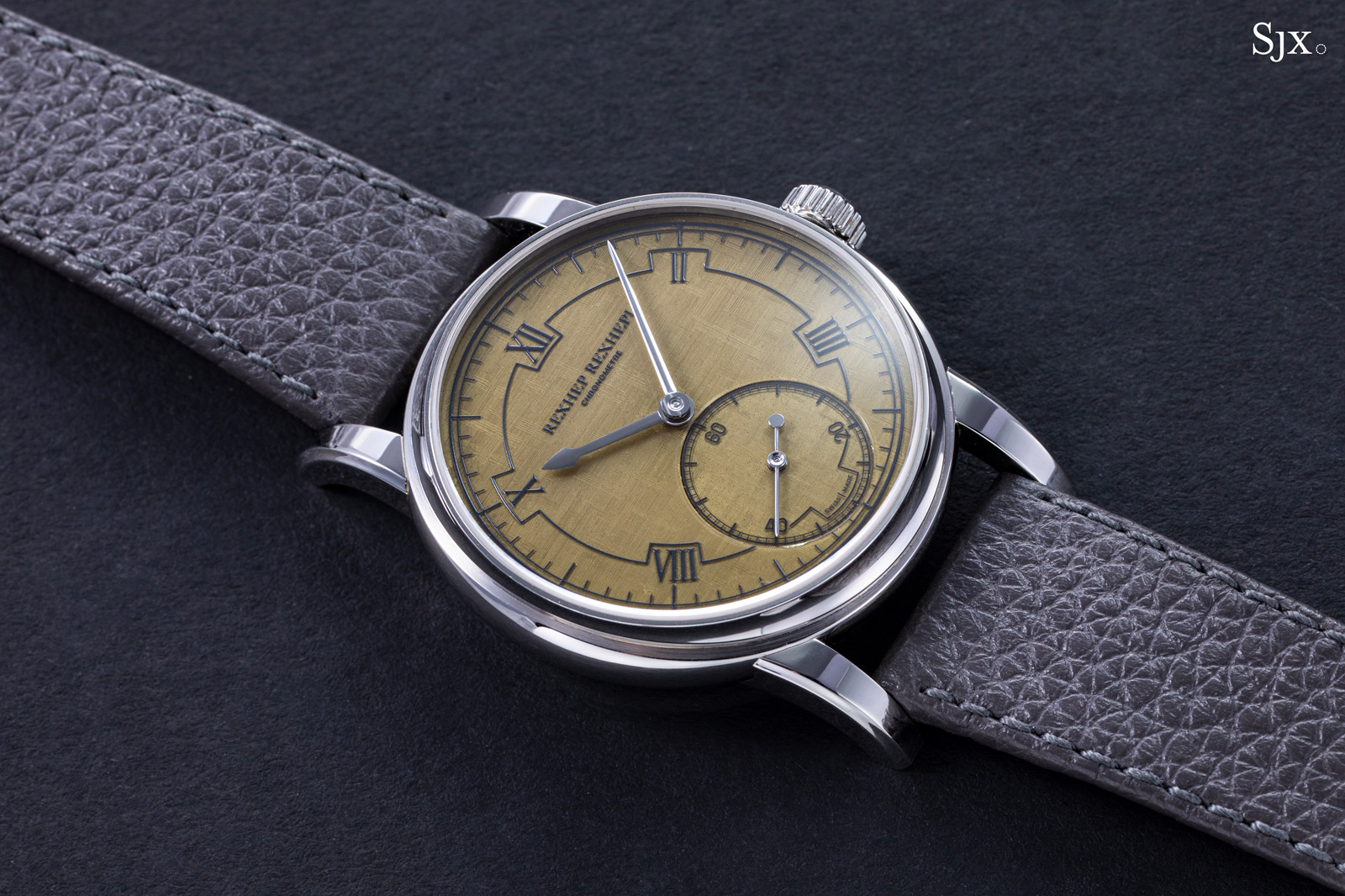
It retains the same dimensions, but with more grace. The lugs have been elongated and narrowed, while the bezel has been made slightly thinner.
All of the changes cumulatively result in an entirely new case, but the difference is only clear when the RRCC II is put side by side with its predecessor.
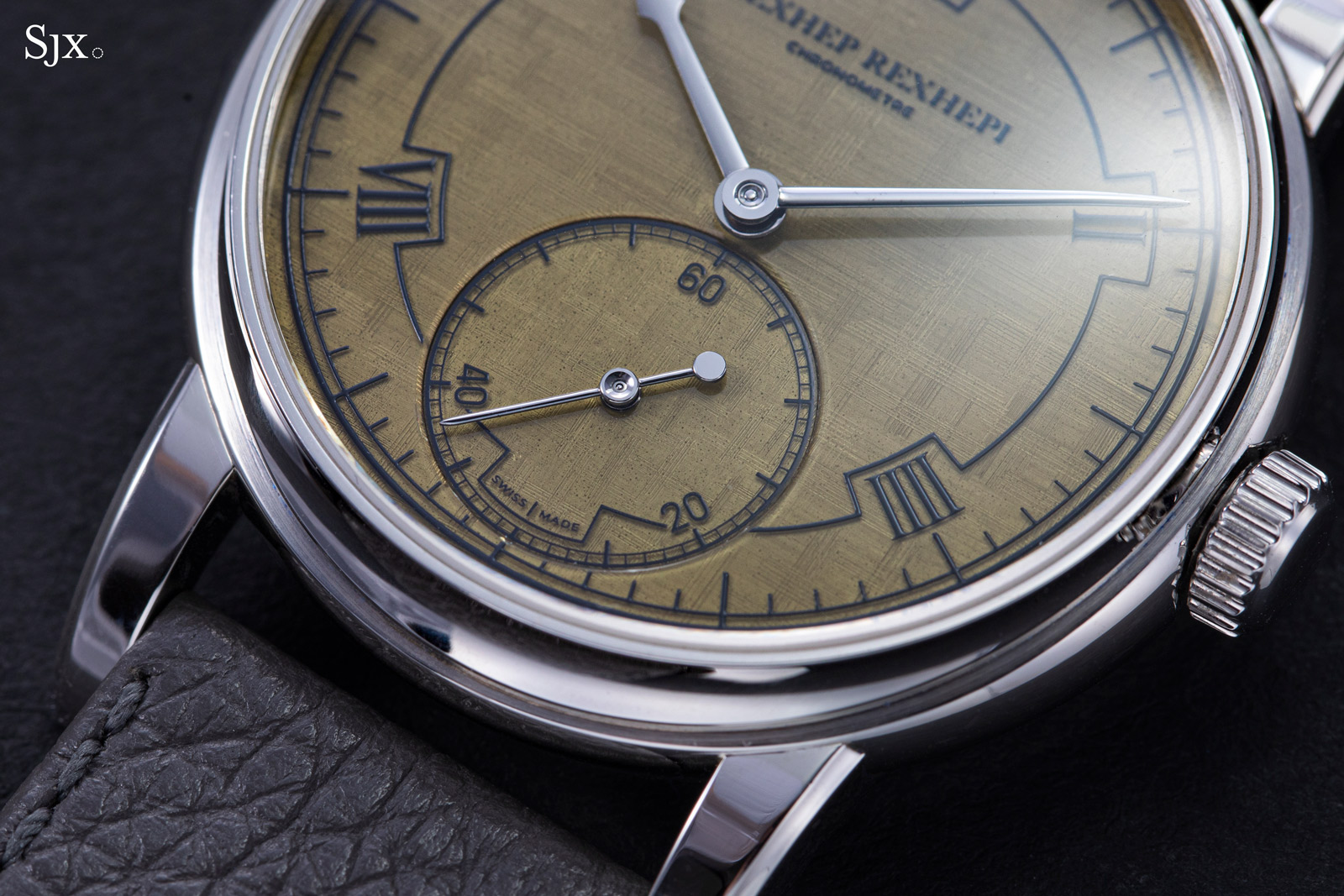

Deceptively similar, but entirely new
Flipping the watch over provides a clear view of the new movement. It is reassuringly familiar in its aesthetic similarity to the RRCC I. According to Mr Rexhepi, this was an intentional choice to preserve the RRCC lineage.
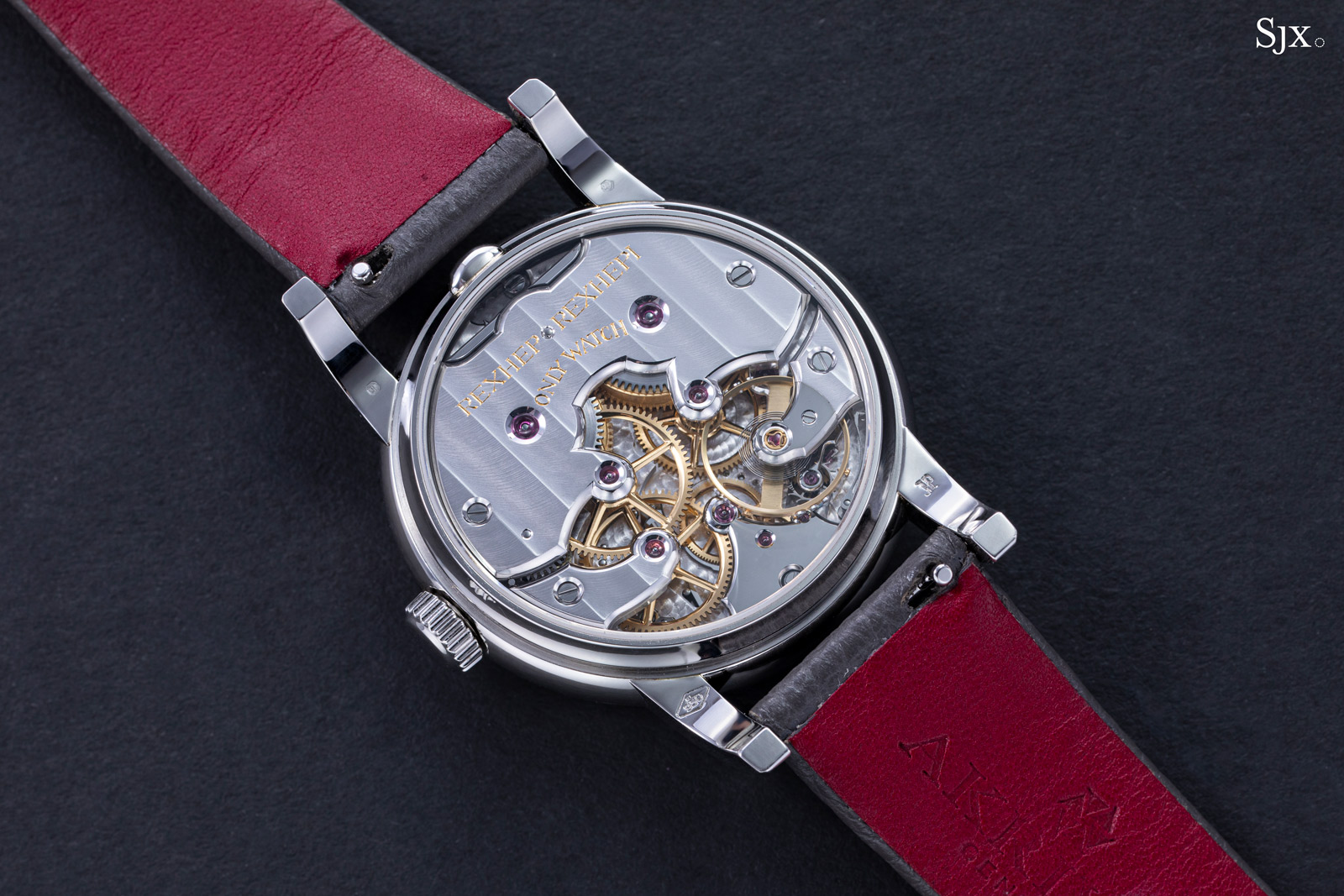
However, the mechanics within are vastly different. One might mistake the prominent wheels in the centre of the movement to be the timekeeping gear train, as they are in the RRCC I. But they are in fact used to drive the deadbeat seconds at six o’clock – one of two gear trains in the movement.
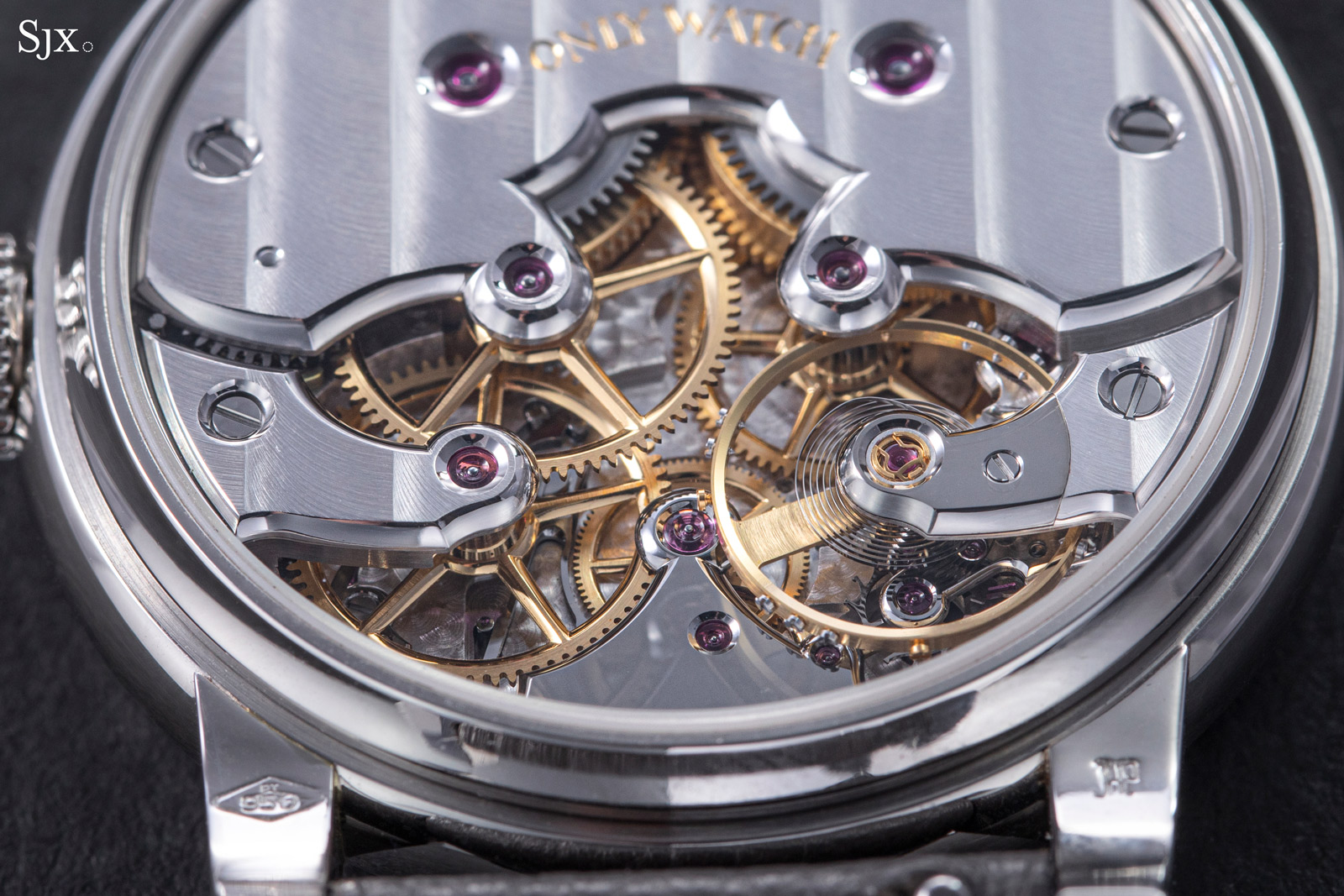
There are a few ways to construct a deadbeat seconds. The most common method is straightforward: a coiled buffer spring that’s part of an auxiliary gear train stores energy to drive a seconds hand. More elaborate setups have the deadbeat seconds as a byproduct of a one-second remontoir – a constant-force mechanism that powers the balance wheel with periodic, even bursts of energy.
The RRCC II accomplishes it with two independent gear trains, each powered by its own mainspring barrel. The prominent gear train visible in the above photo (to the left of centre) is the deadbeat gear train that drives the seconds hand at 6 o’clock.
The other gear train is for timekeeping. It powers the motion works, which drives the minute and hour hand.
But it’s unusually laid out in the RRCC II. The gear train is discreetly hidden along the right side of the movement, going from the barrel to underneath the balance cock and finally to the escapement. The going train also powers the motion works, which drives the minute and hour hand.
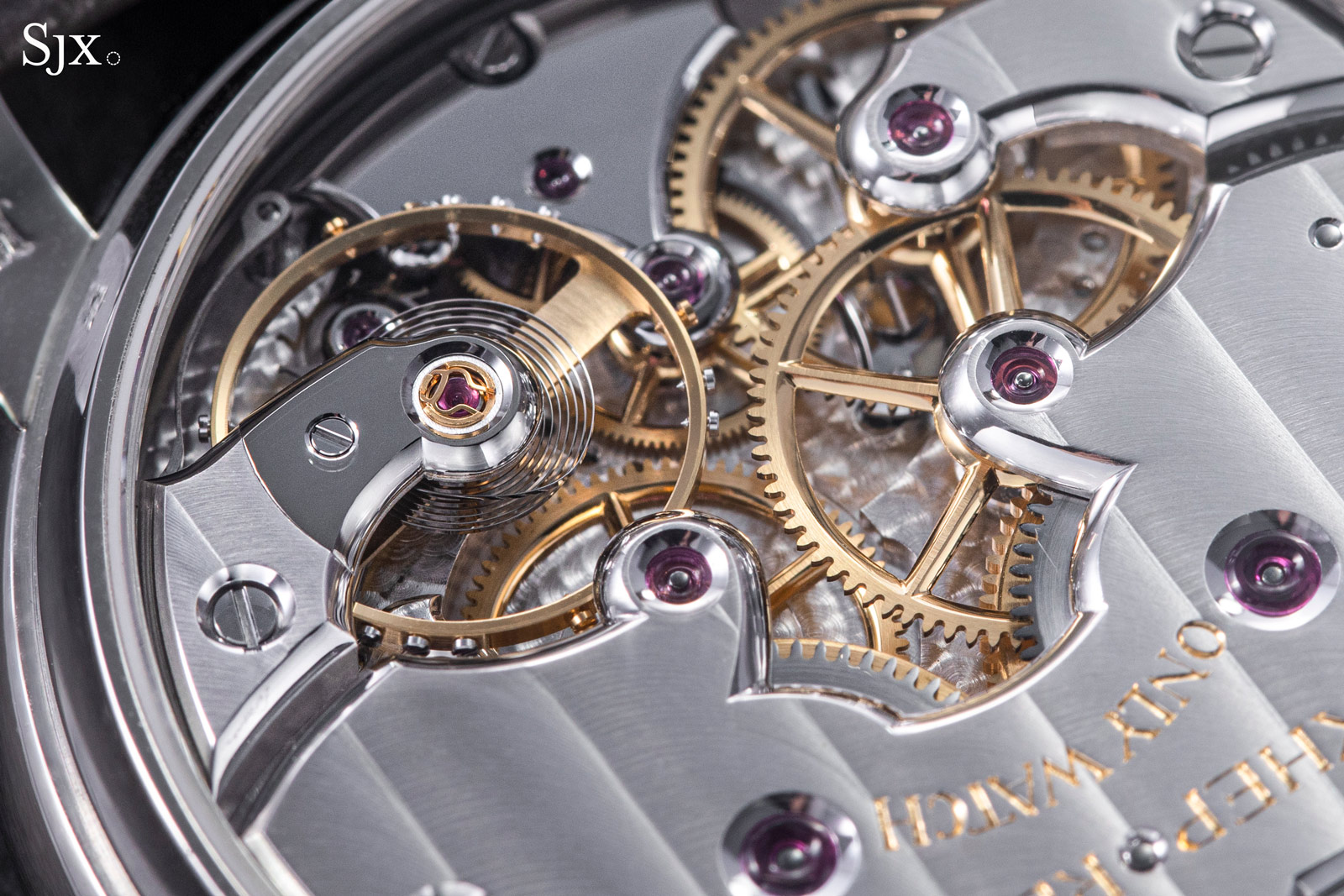
The timekeeping gear train is visible above left and runs underneath the balance wheel, hidden away on the dial side of the movement. The large wheel to the top right is part of the deadbeat gear train.
In other words, the movement would still keep time perfectly fine without the deadbeat gear train in the middle – but it would go without a seconds hand.
The deadbeat seconds is controlled via the conventional method of a star and flirt – a continuously rotating five-pointed star gradually releases a long lever, or flirt, once every second. This is how the power of the deadbeat gear train is controlled and gradually released. The flirt is hidden under the triangular bridge of black-polished steel at six o’clock of the movement, and contacts the star which is mounted under the escape wheel.
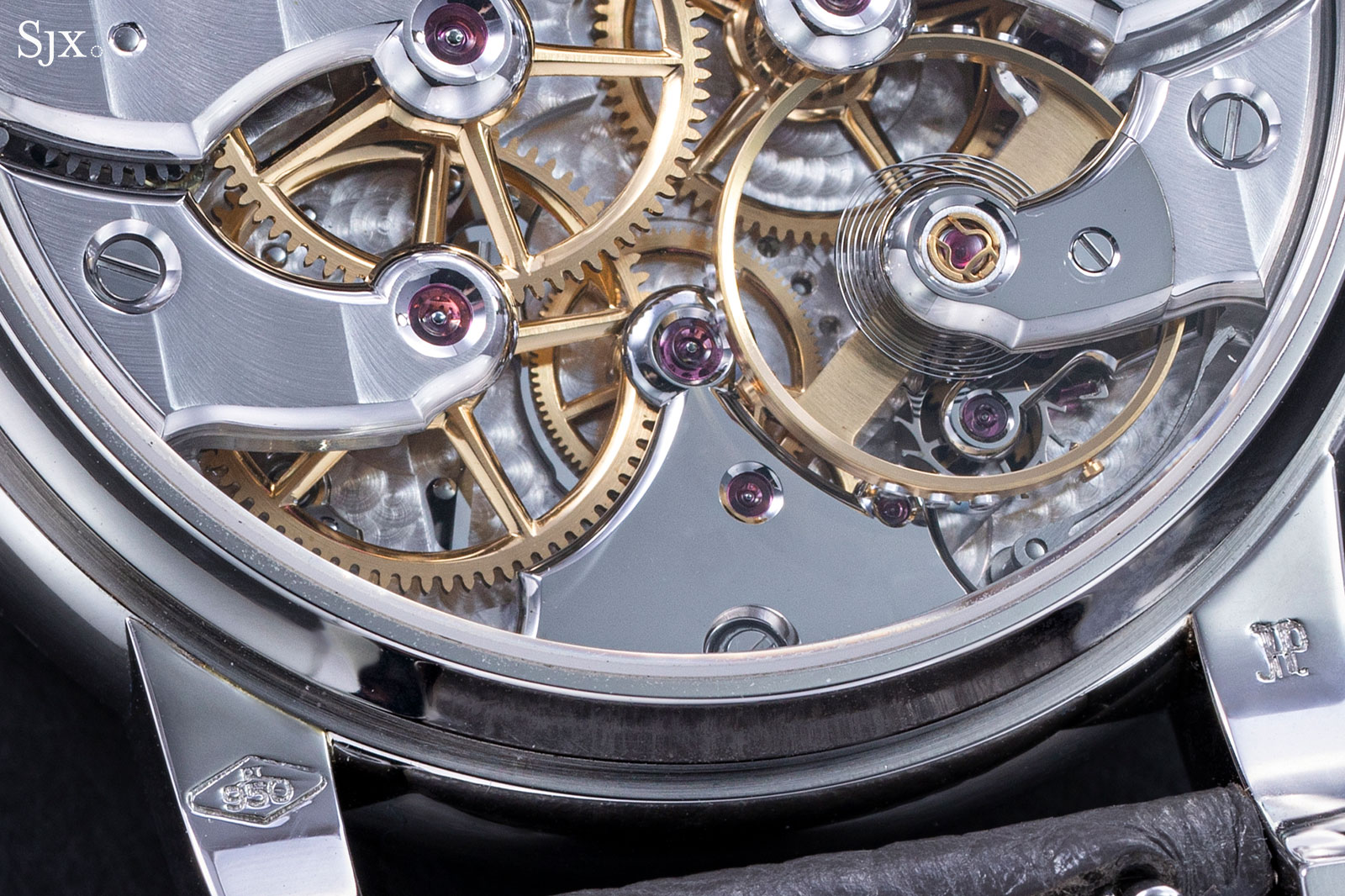
As the going train is driven continuously while the deadbeat train advances once every second, separate mainspring barrels are logical from a mechanical perspective – driving both gear trains with the same barrel would only be feasible with a buffer spring within the single gear train. But that is a less pleasing solution because it is simpler and more common, though it is more efficient space-wise.
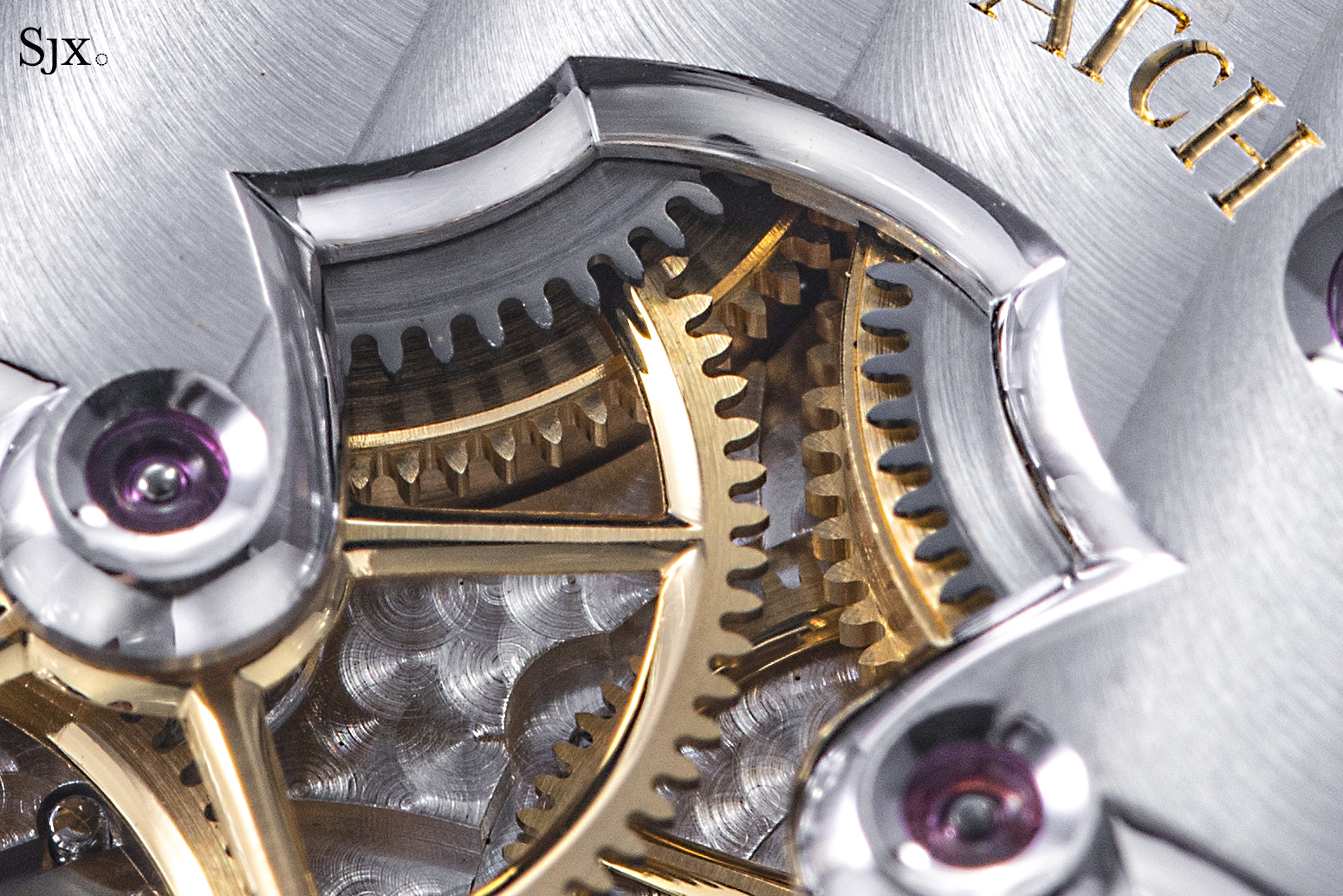
Notice that the barrels are not geared together – the teeth of they ratchet wheels sit on different planes, as they are independent. The left barrel powers the deadbeat gear train, while the right powers the going train for timekeeping.
One could deduce the beat rate of the movement only from photos. The escape wheel has 15 teeth on it, while the deadbeat seconds is controlled by a five-pointed star. This means that every second, three teeth of the escape wheel has to be released, which means that this is a 3 Hz movement, or one running at 21,600 beats per hour.
The balance wheel is of a free-sprung design, with white gold screws along its rim for poising, and four yellow gold screws that serve as inertial weights for regulation. And the hairspring has an overcoil, which is always preferred for better isochronism.
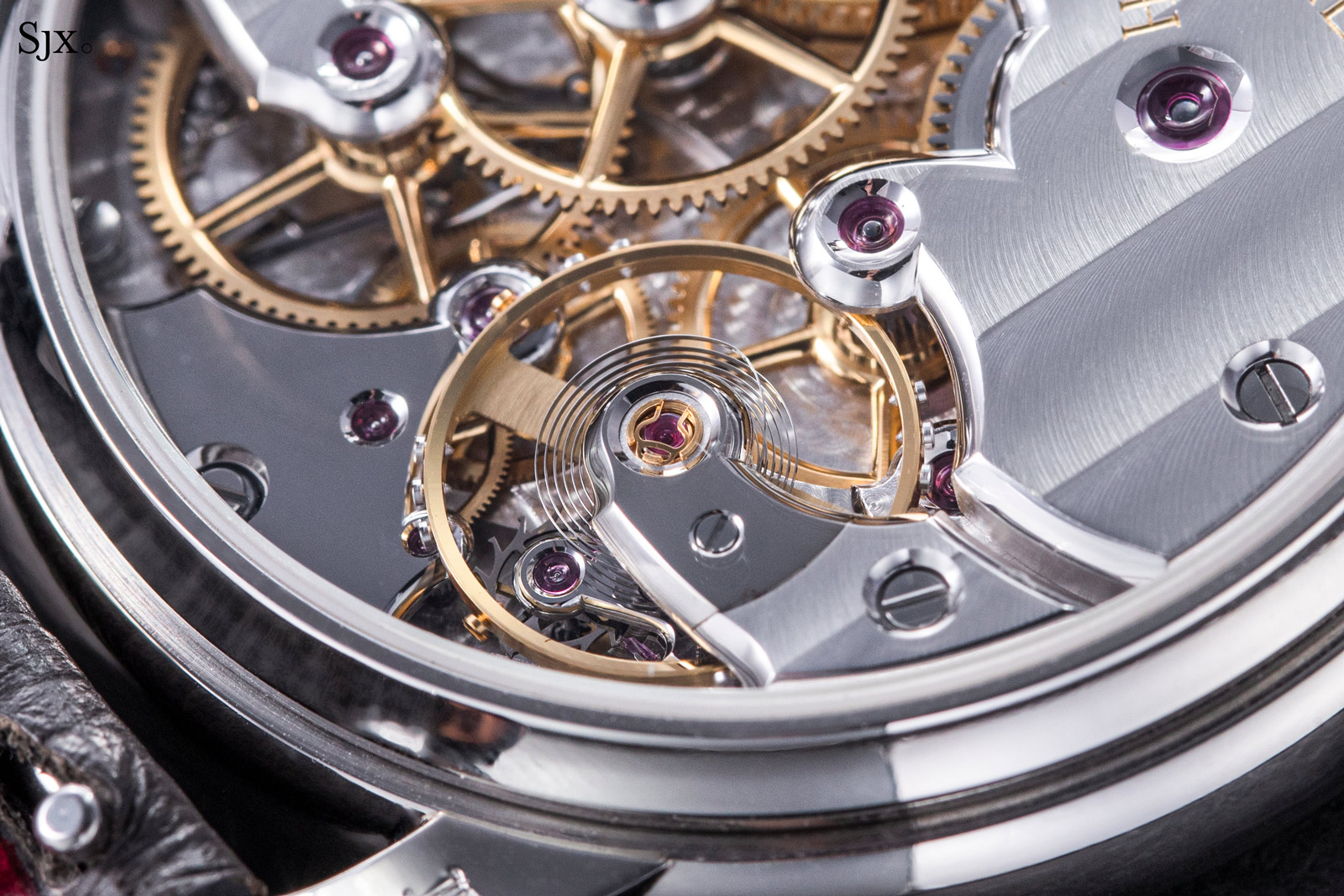
The overcoil hairpsring and the four golden weights of the freesprung balance wheel. Also barely visible is the star and flirt, right under the escape wheel.
The eagle-eyed will also spot a pivoting lever right below the balance wheel – this is to stop the balance wheel.
The RRCC II impressively retains has the zero-reset seconds mechanism of the RRCC I and the AK-06, which means that the seconds hand will reset to zero when the crown is pulled out to set the time.
But because the seconds here is deadbeat, unlike the conventional sweeping seconds of the RRCC I, the hacking mechanism was set up to kick in only after the seconds hand has completed a full step, so that it does not hack in the midst of a jump.

Observe the pivoting lever to the right of the balance wheel, which is for the hacking feature.
Finishing
The finishing should be familiar to those that follow Akrivia’s other work – in other words, exemplary.
In general, the RRCC II movement exhibits the same standard of finish as the RRCC I, but with some refinements, including a few that are purely a matter of design. One of the most prominent improvement is the increase in black-polished steel parts.
The RRCC II has a large, black polished bridge at six o’clock which supports the deadbeat seconds and the flirt. This was not present on the RRCC I, which relied on a brass bridge instead. That said, the triangular bridge compensates for the fact that the RRCC II does away on the beautiful black-polished steel bridge supporting the centre wheel of the RRCC I, due to the twin-gear train construction of the movement.
On that note, I personally prefer the central bridge design of the RRCC I. The RRCC II has an convoluted barre bridge that supports the wheels of both gear trains, resulting in an awkward crevice in between the barrels – but one magnificently finished with four inward angles on the anglage.
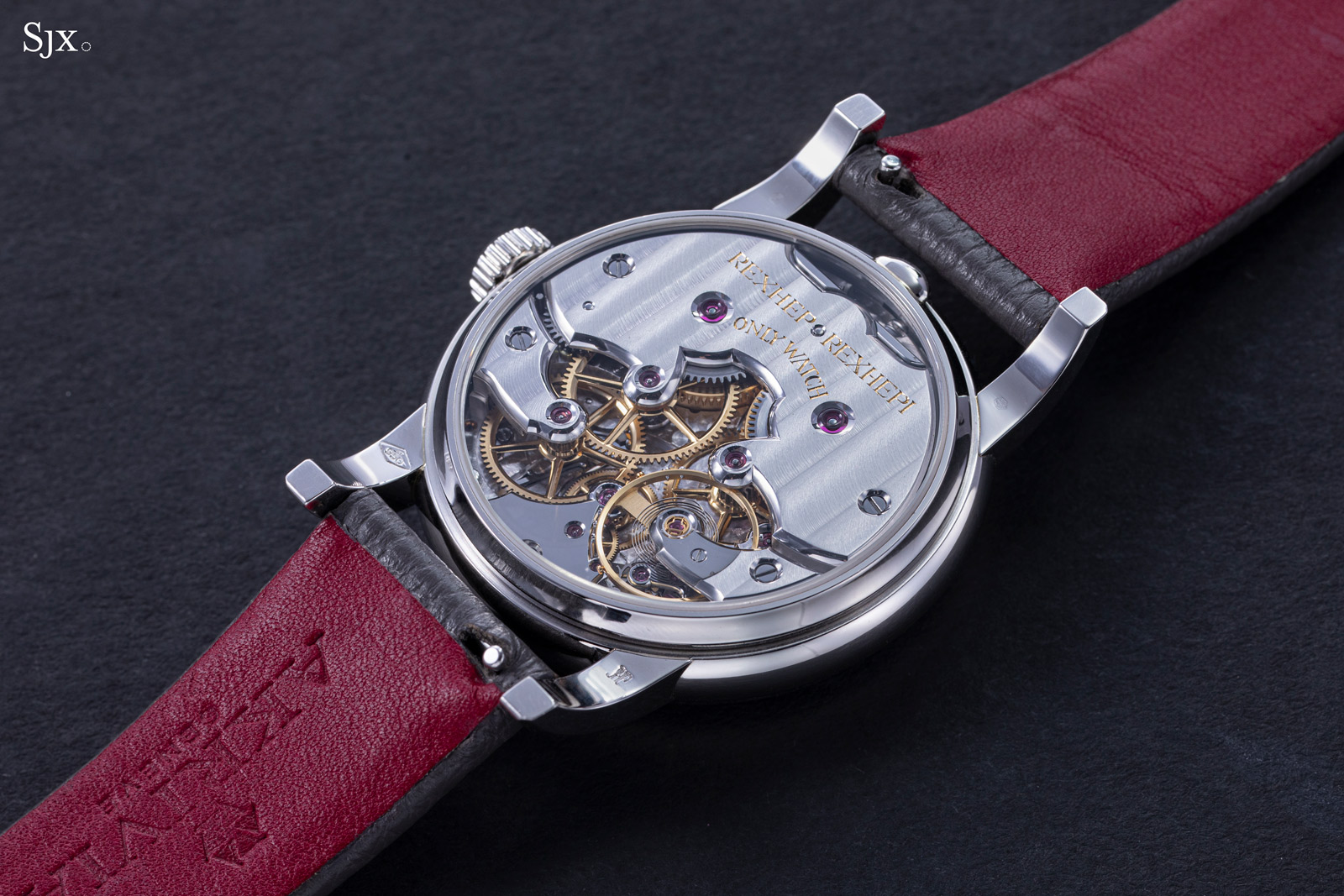
The centre crevice of the barrel bridge feels awkward, compared to the elegant central black polished bridge of the RRCC I.
And anglage does the RRCC II have. In generous quantities – the edges of every bridge are adorned by wide, rounded anglage that is easily among the most attractive in watchmaking today. Even the spokes of the wheels have unusually wide anglage, which gives an organic feel to them.
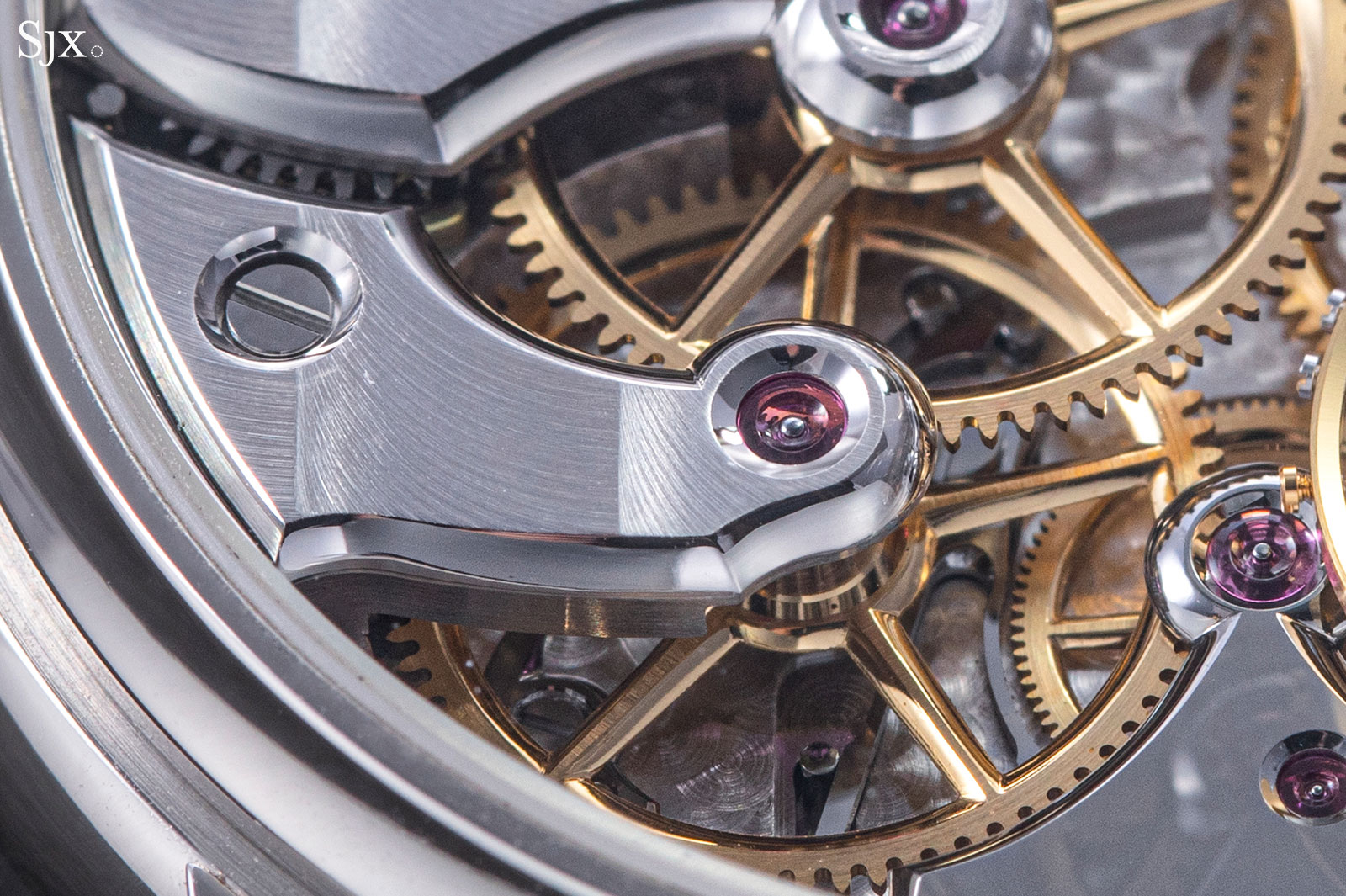
As an aside, wide, rounded anglage is done manually by hand – with files to shape and pithwood to polish – giving watchmakers fine control over the curves of the bevel, while being a painstakingly slow process.
In comparison, high-end watches produced on an industrial scale often have anglage done with a rotary buffing tool instead. That still produces rounded anglage, and at a quicker, practical pace. But it loses the definition of the curves due to less control over the high-speed buffing wheel. Thus, the anglage found in the RRCC II can only be feasible with small scale production, usually by skilled independent watchmakers.
To accompany the bevelling, the jewel and screw holes have wide, bowl-shaped countersinks which complement the broad anglage of the bridges, completing the package.
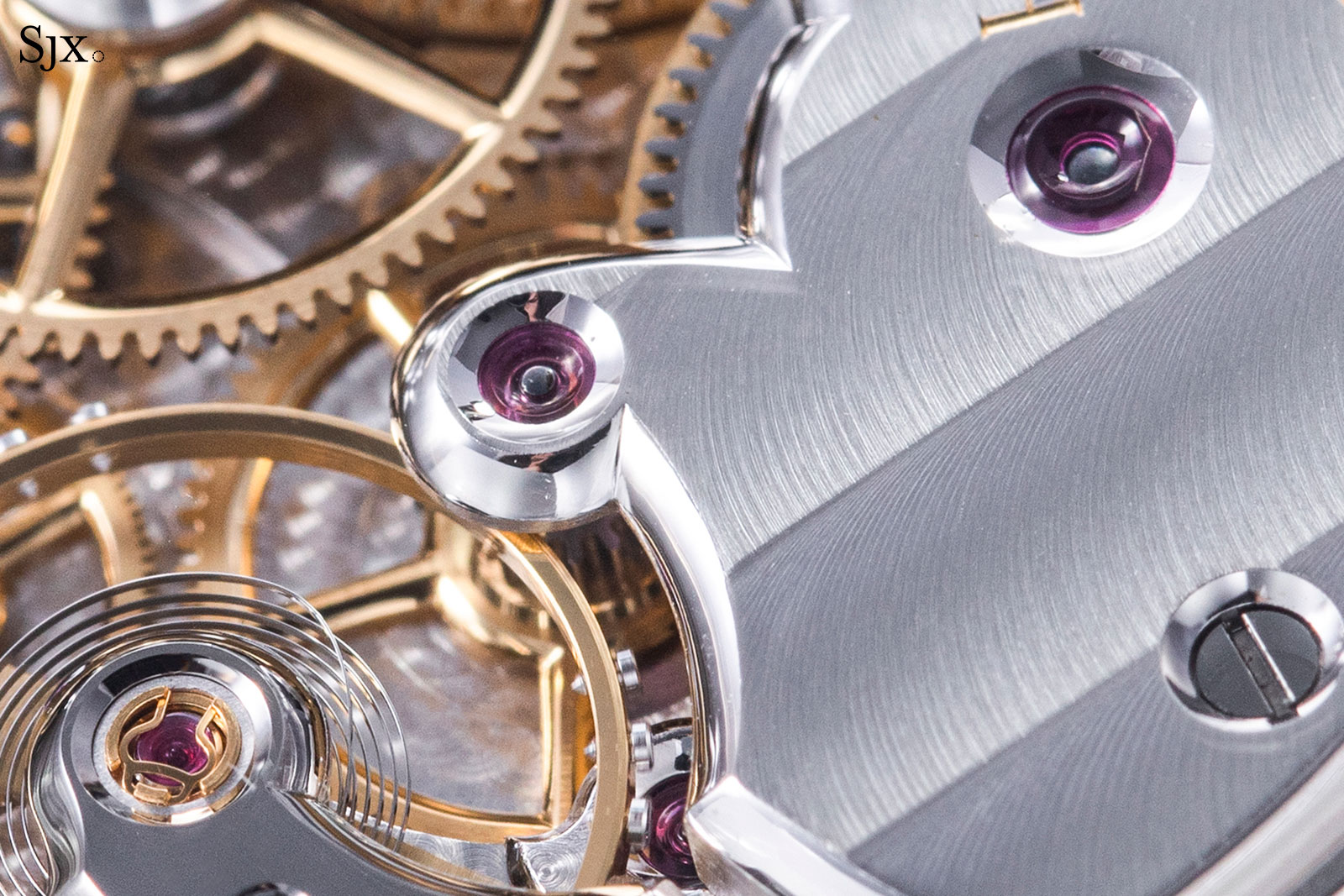
Large bevels but small scale
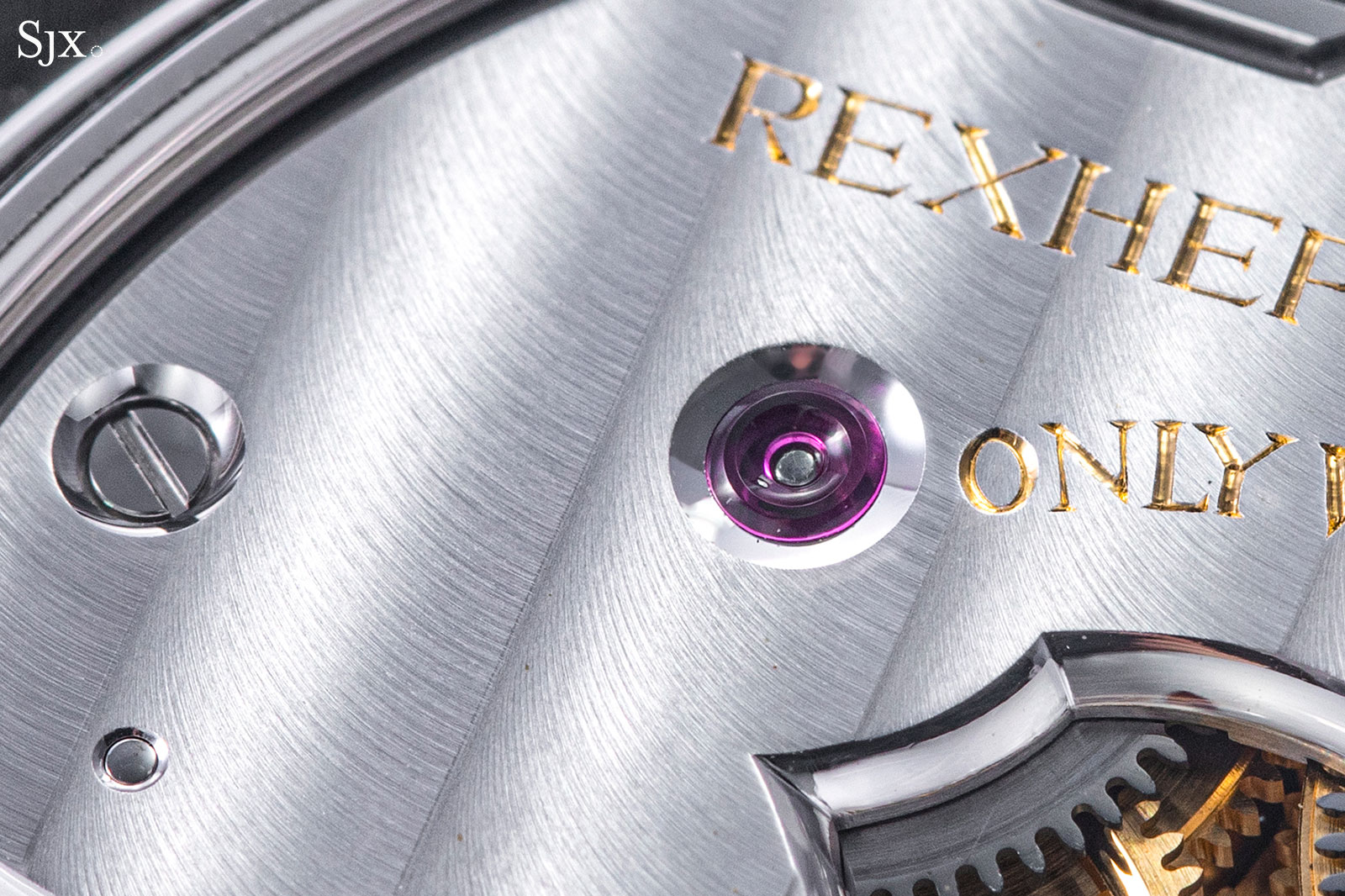
Like the bevelling, the Cotes de Geneve on the bridges are a great example of perfect application of the technique. The stripes have a fine, feathery consistency with no harsh borders between each stripe. And most importantly, the stripes are applied lightly, so the surface remains flat, avoiding the jagged border visible between stripes and anglage on industrially finished movement.
A less obvious upgrade in the RRCC II is the pallet fork bridge, which now also supports the escape wheel due to the deadbeat configuration.
Instead of a striped finish, it is now entirely black polished with sharp inward and outward angles on the anglage – a major refinement on a part that is often obscured from view because it sits under the balance wheel.
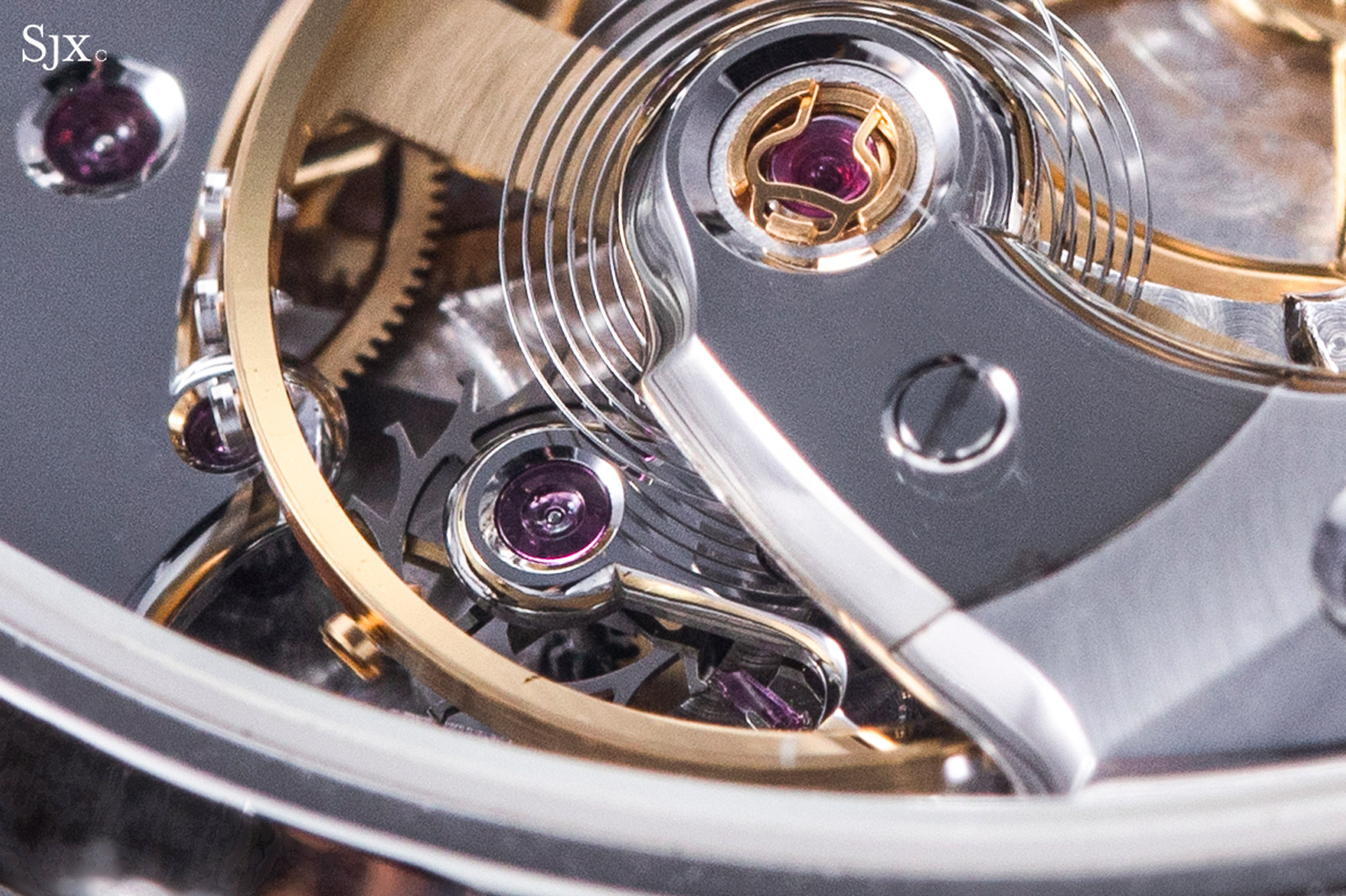
The pallet fork bridge is an exemplary demonstration of black polish, countersinks and anglage
The balance wheel itself is supported by a balance cock carrying a black-polished steel cap. A minor nitpick would be that the anglage between the steep cap and the brass bridge is not fully aligned – there is a slight distortion at the boundary of the mating parts. The anglage on the steel cap itself also appears slightly uneven. That said, this is a prototype and it will be perfected before delivery.
Another minor quibble is the finish of the ratchet wheels. Compared to everything else, they appear plainly finished, with no additional flourishes such as individually polished teeth. This is consistent with the finishing inside the RRCC I, but polished teeth would truly make the finish of the RRCC II all encompassing.
It is also worth mentioning the engraving on the barrel bridge. It is clearly done by hand, as evident by the sharp serifs of the font. The slight inconsistency of the font alignment are only visible upon close magnification, and overall simply gives a pleasing, artisanal touch to the movement.
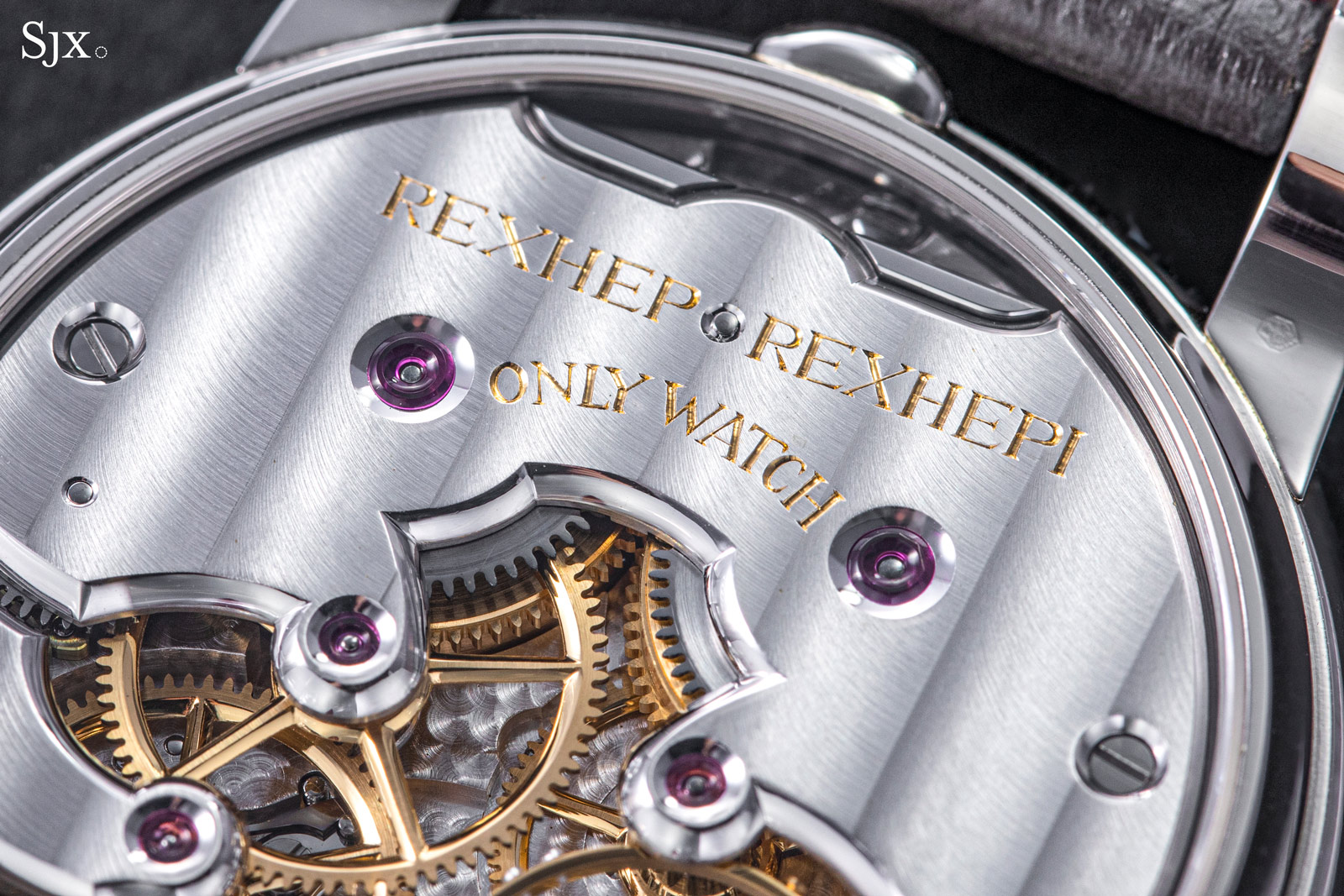
Giving individually polished teeth of the ratchet wheels would have elevated the overall finish to the highest standard
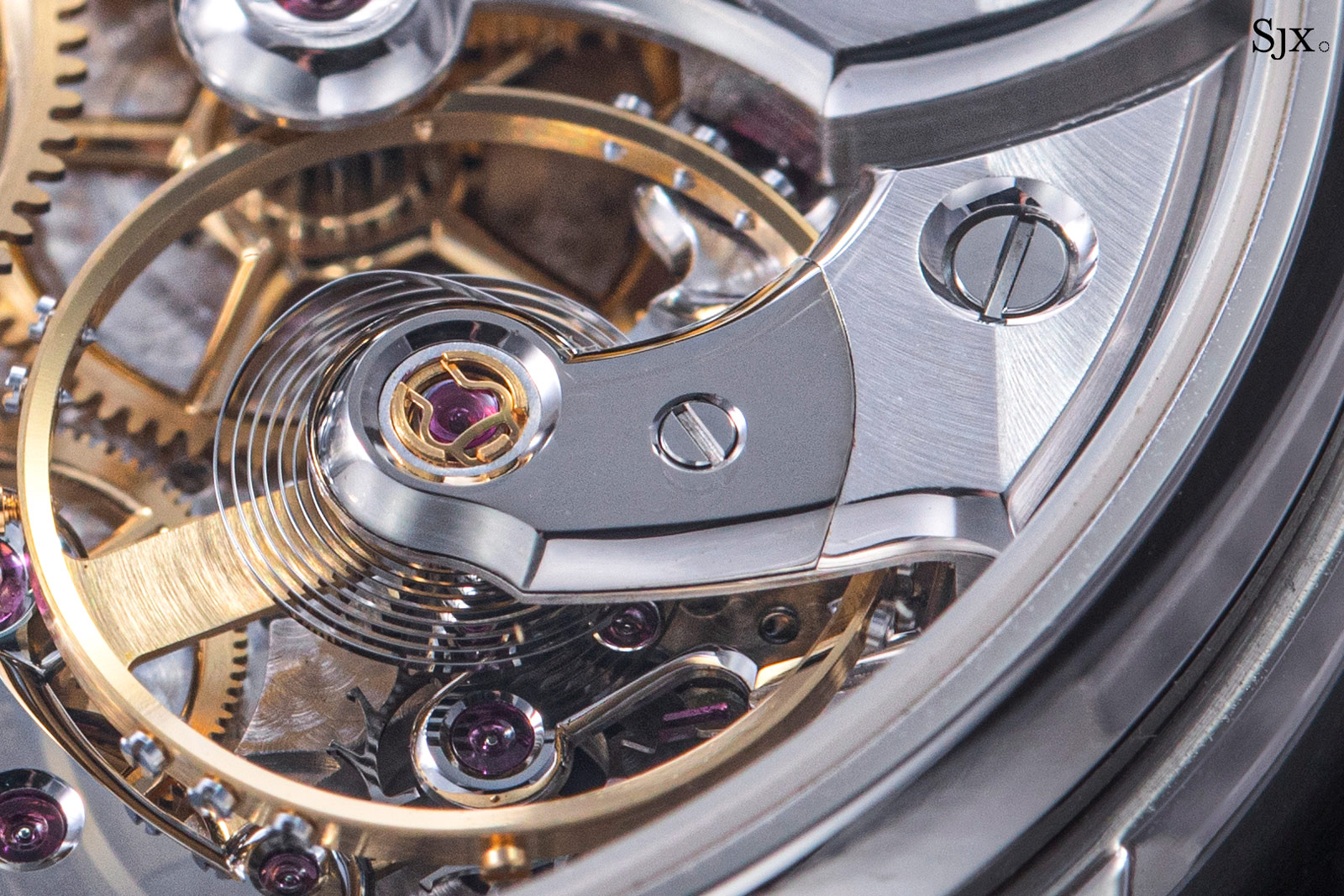
Notice the slight distortion of the anglage of the steel cap and the boundary where it mates the rest of the balance cock
Concluding thoughts
The RRCC II meets the lofty standards set by the RRCC I, and exceeds them by a modest margin. It is hard to imagine it getting any better (though if I were the winner of the watch, I would opt for a new dial).
Key facts and price
Akrivia Rexhep Rexhepi Chronomètre Contemporain II “Only Watch 2021”
Diameter: 38 mm
Height: 9.75 mm
Material: Platinum
Crystal: Sapphire
Water resistance: 30 m
Movement: RRCC02
Functions: Hours, minutes, and jumping seconds
Frequency: 21,600 beats per hour (3 Hz)
Winding: Hand-wind
Power reserve: 82 hours
Strap: Leather strap
Limited edition: Piece unique
Availability: To be sold at Only Watch on November 6, 2021
Estimate: CHF70,000-100,000
For more, visit onlywatch.com.
review
Back to top.
